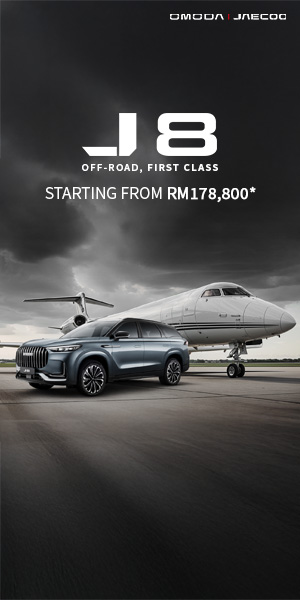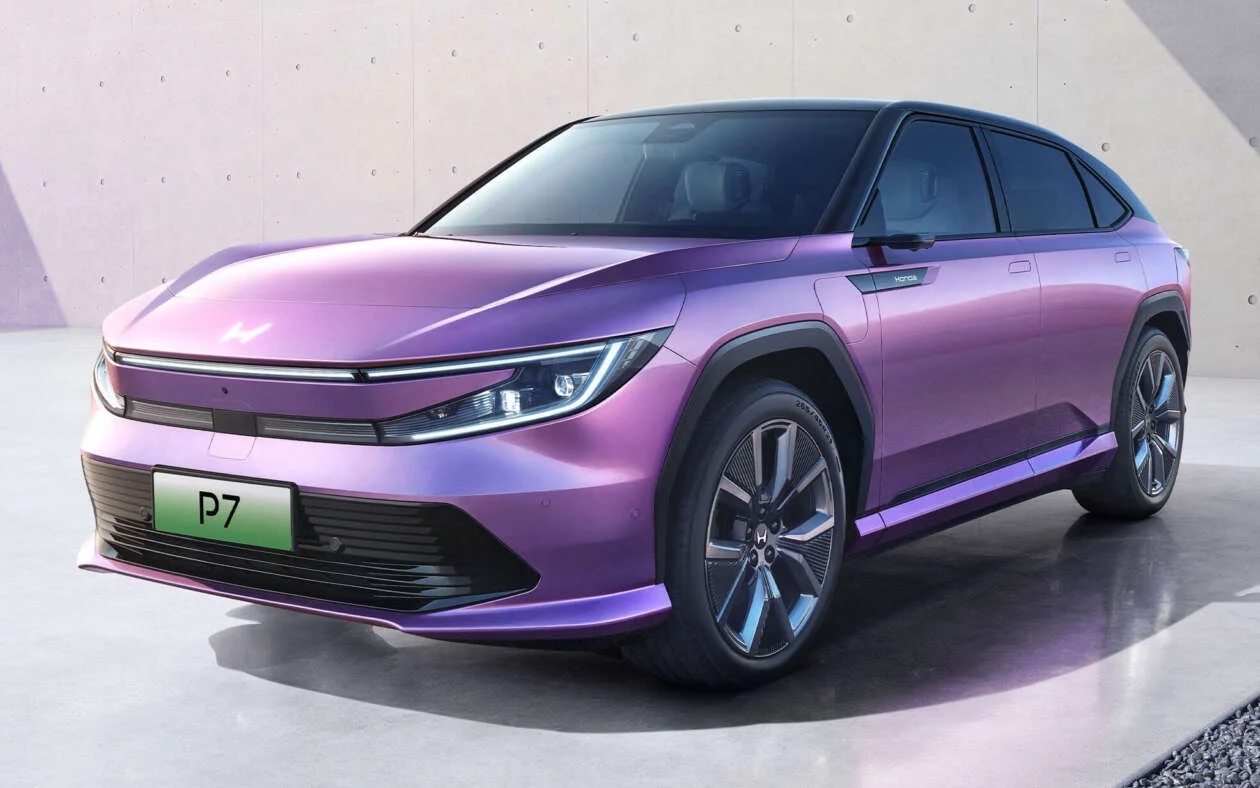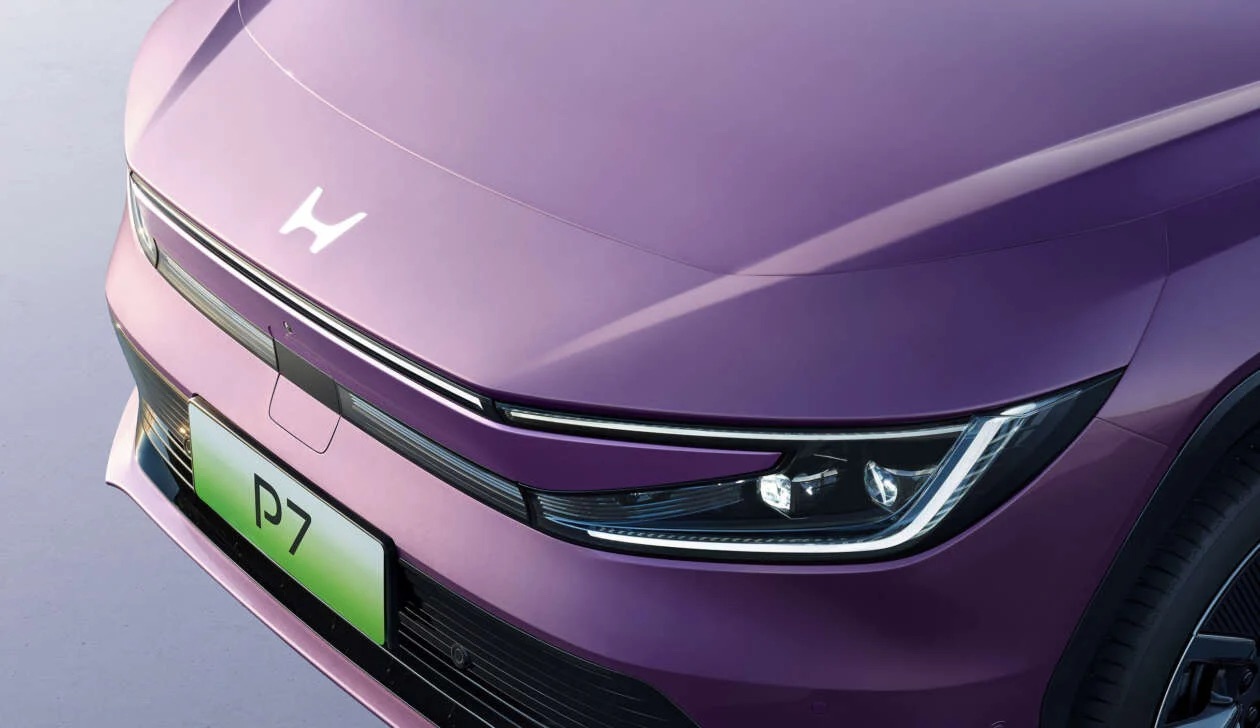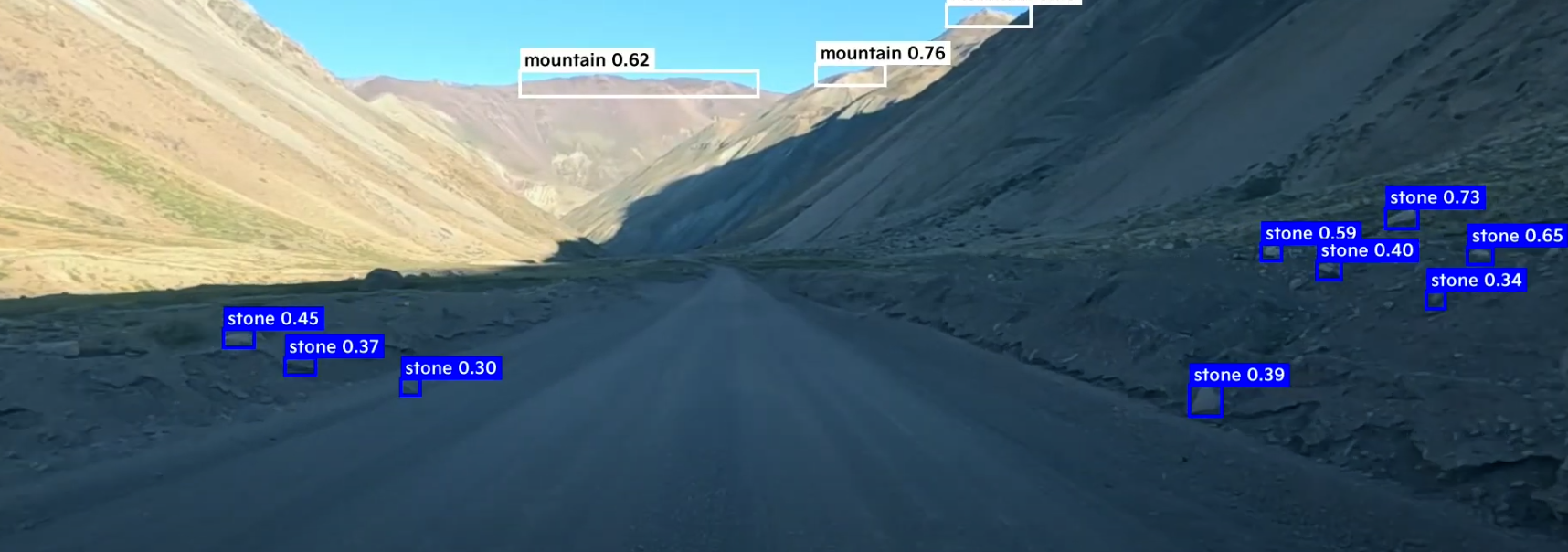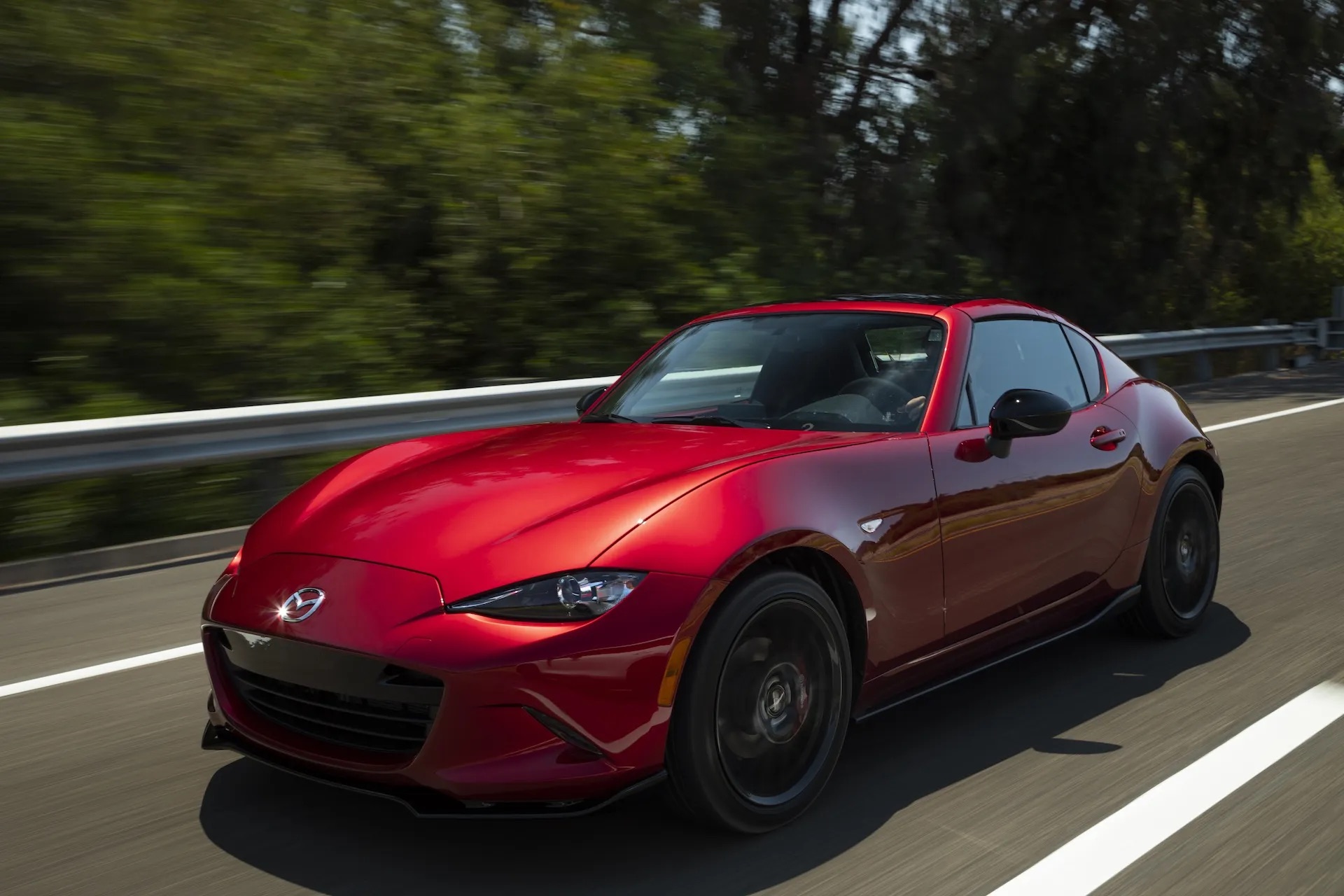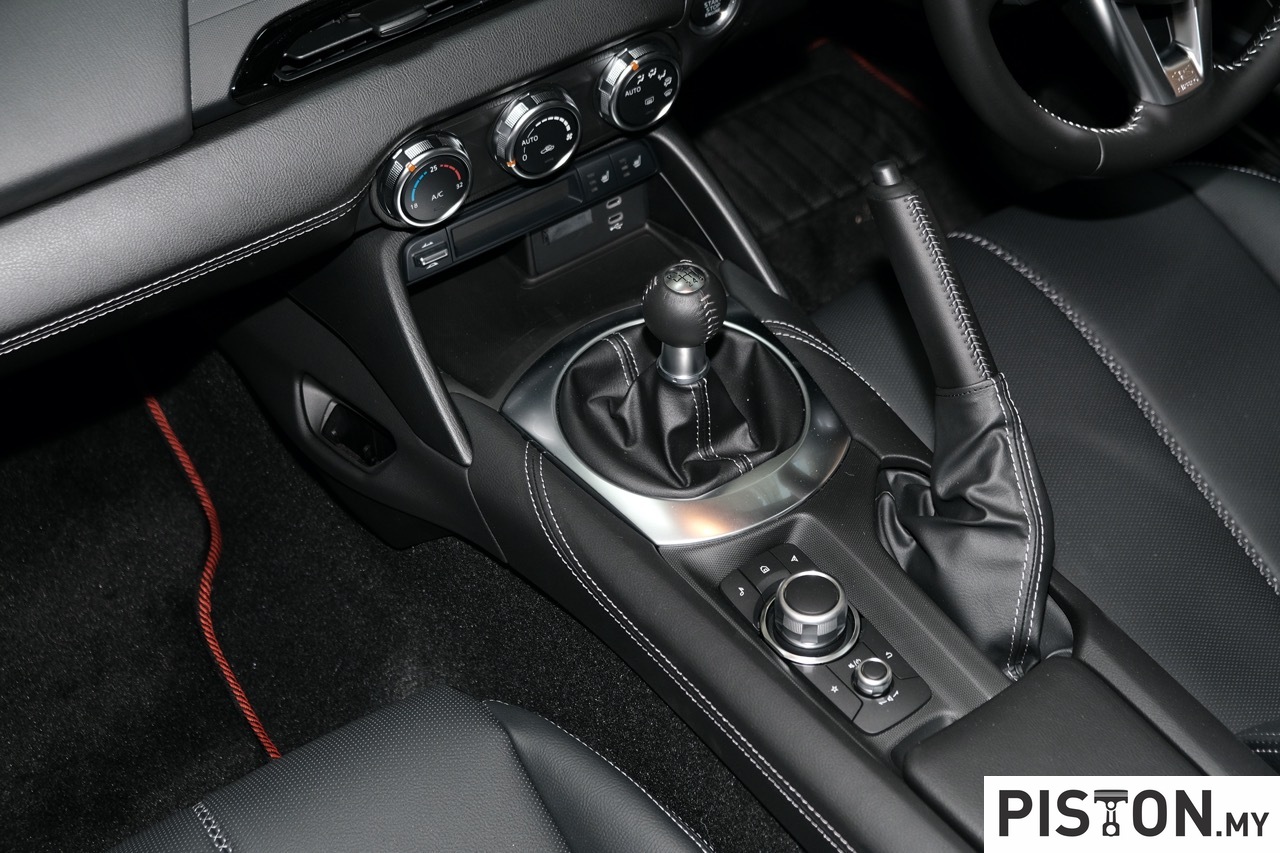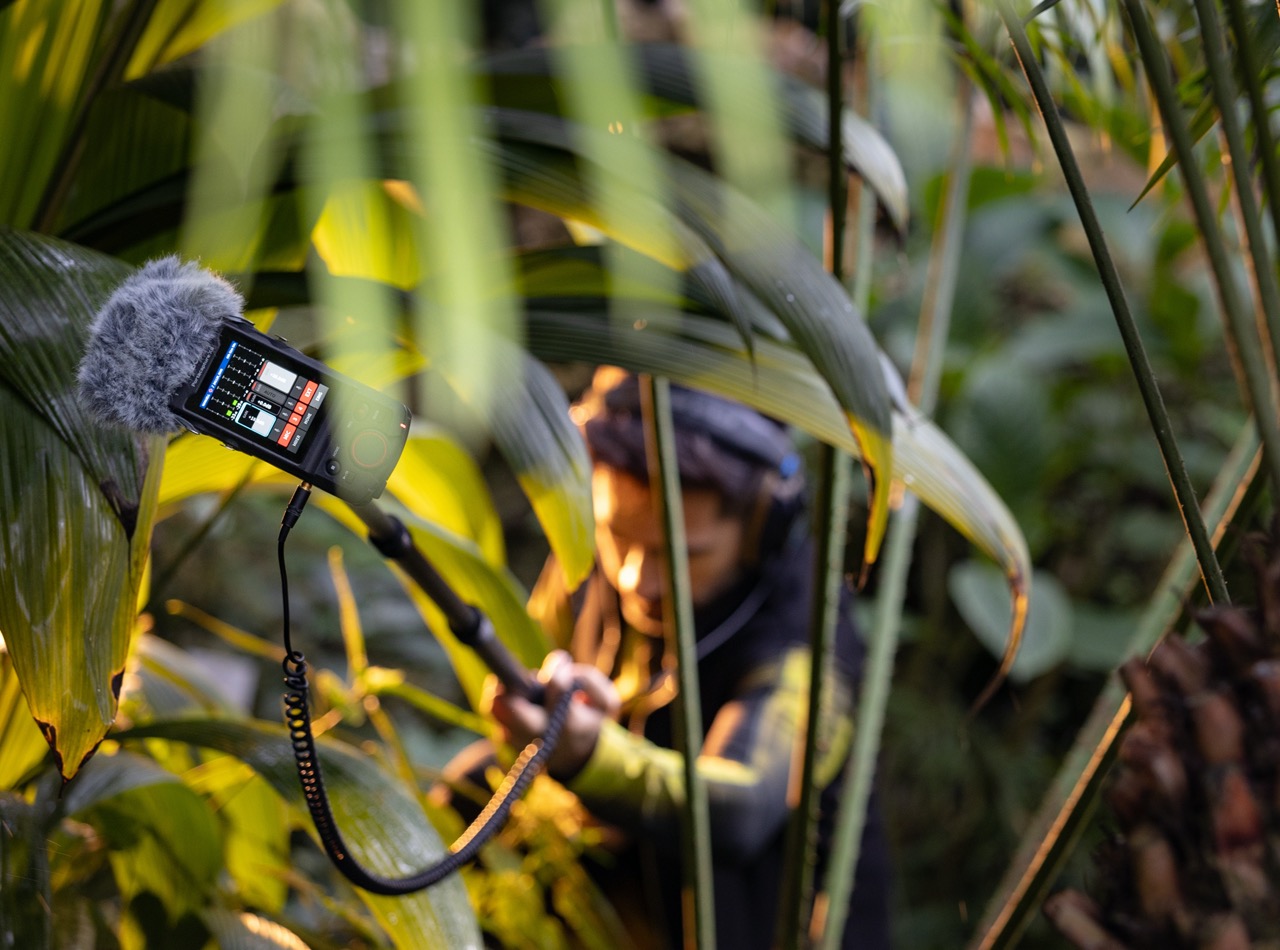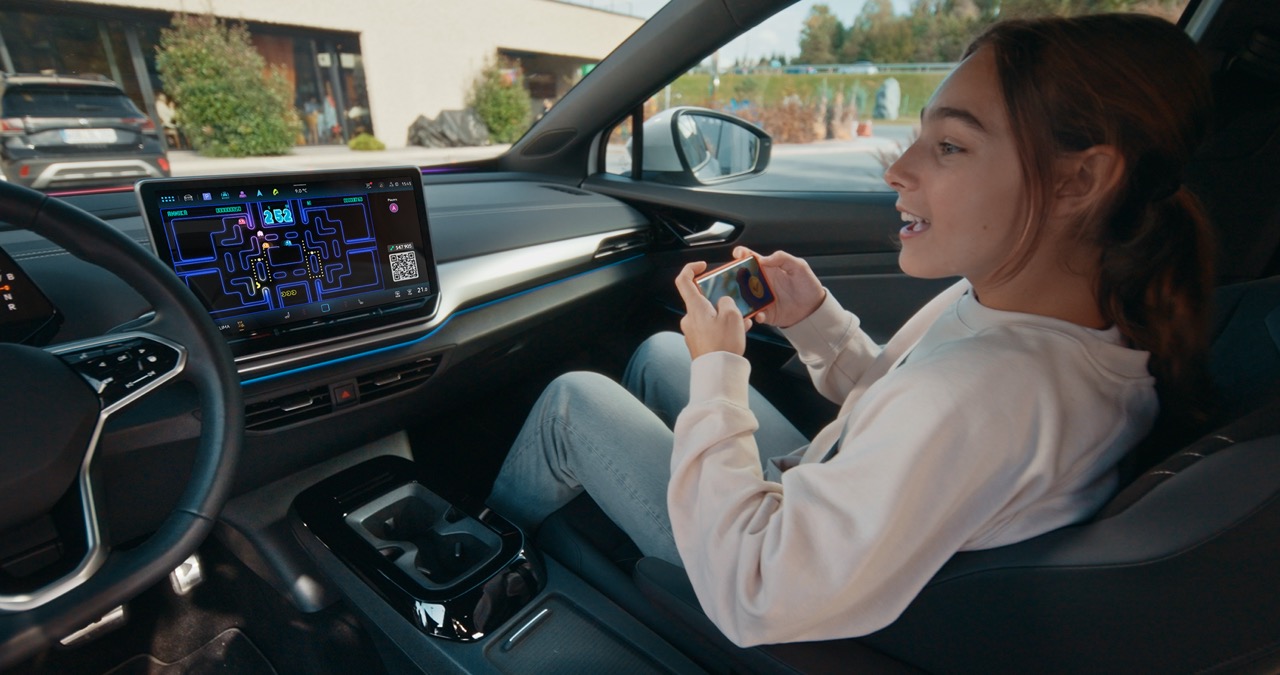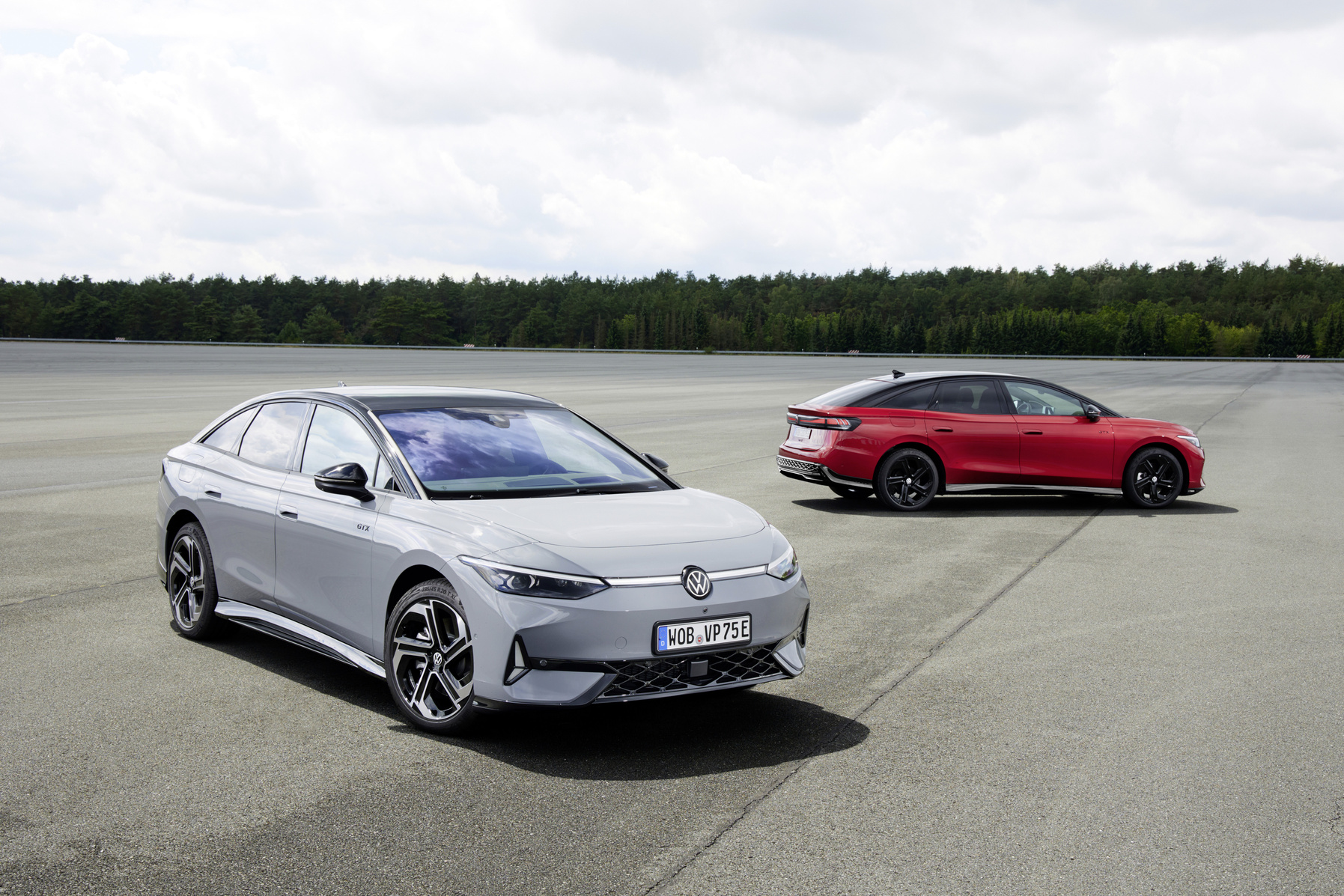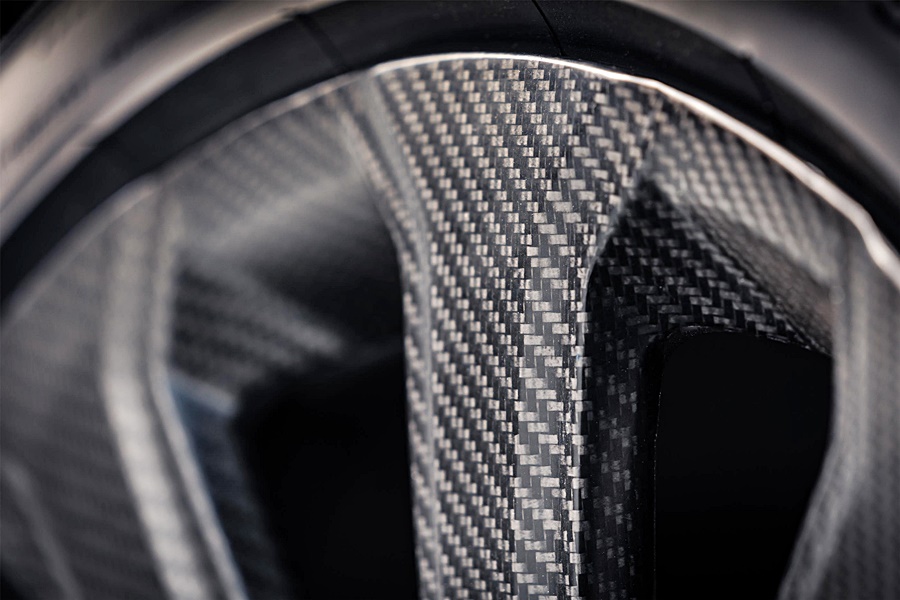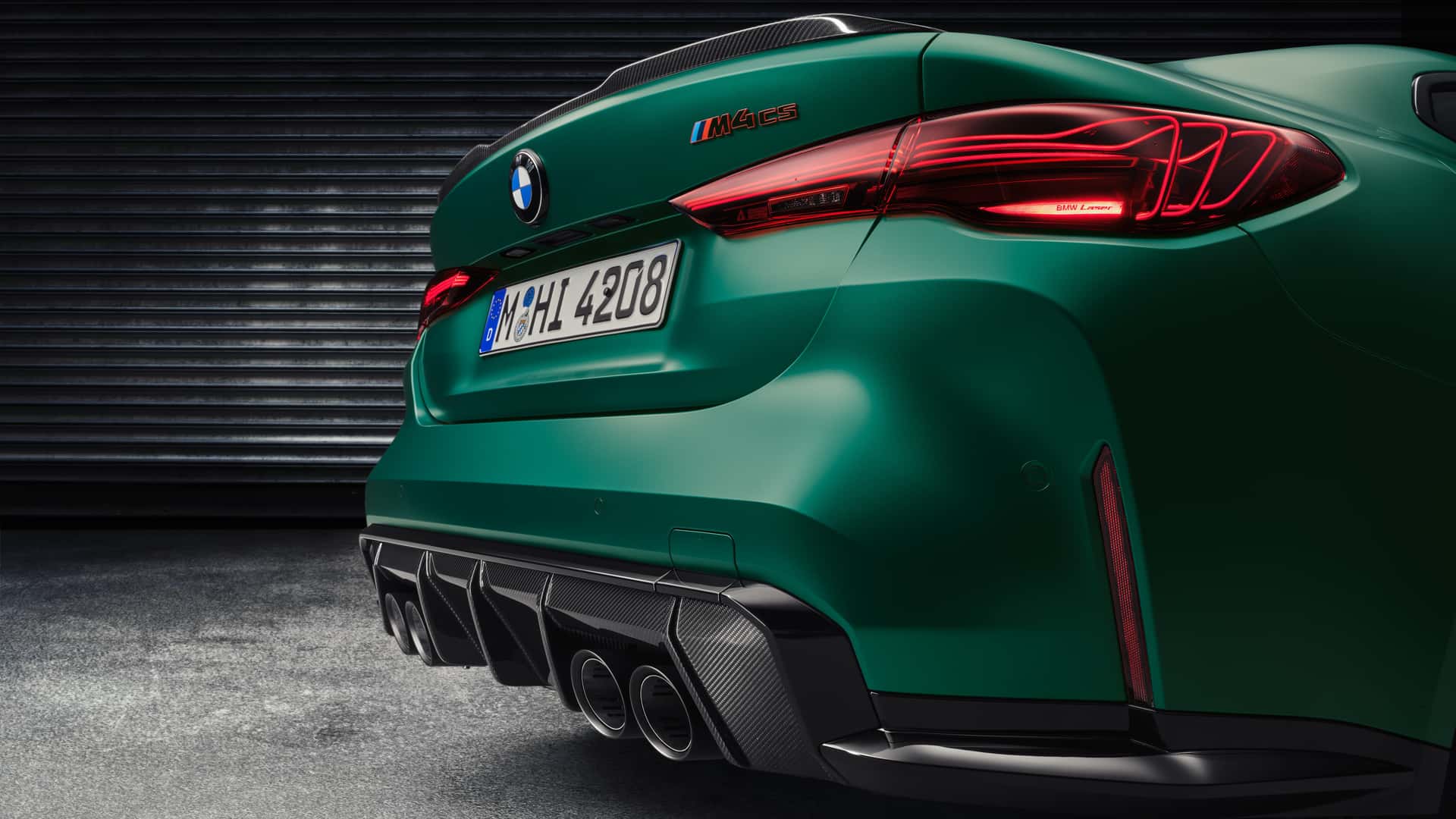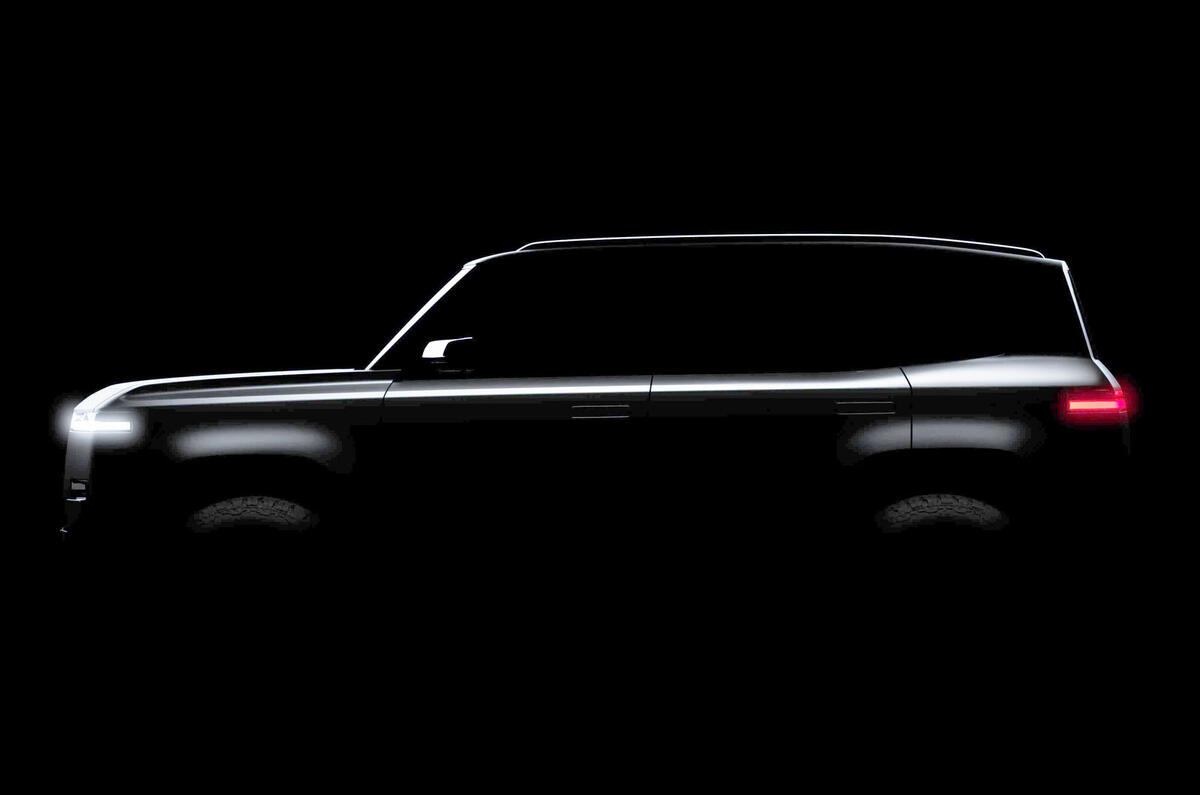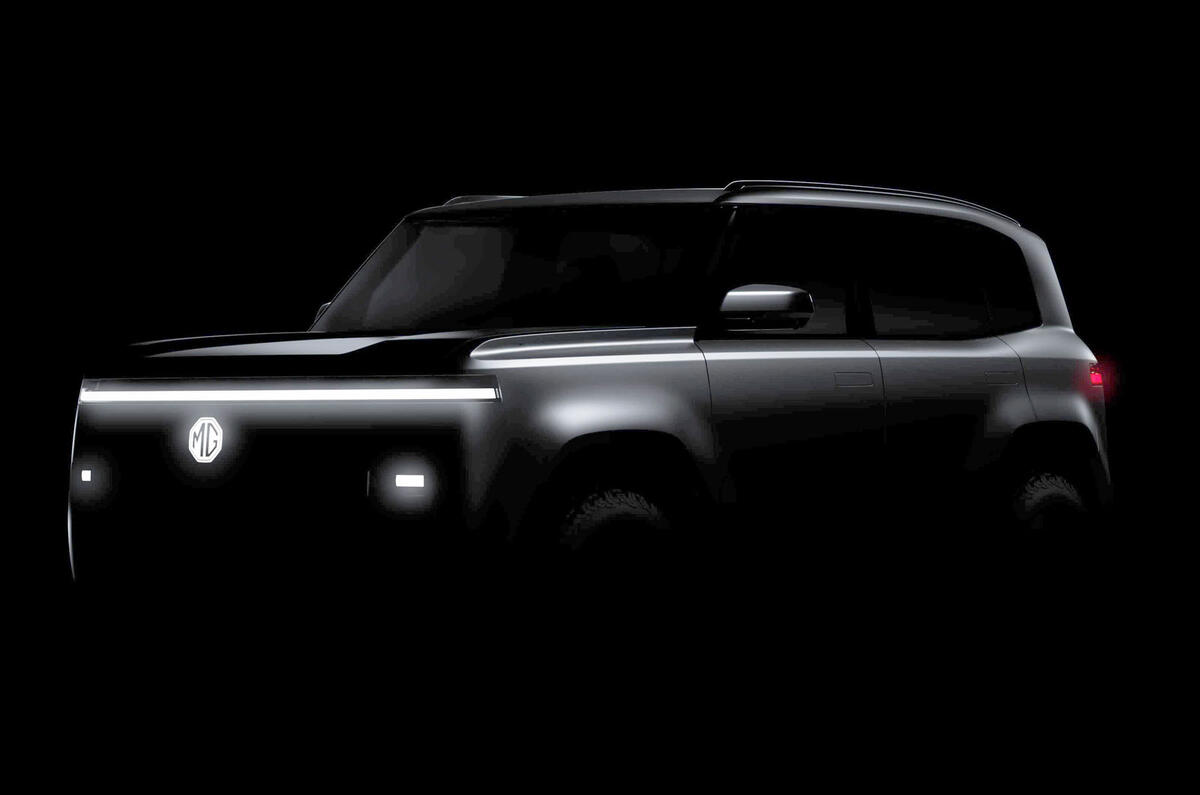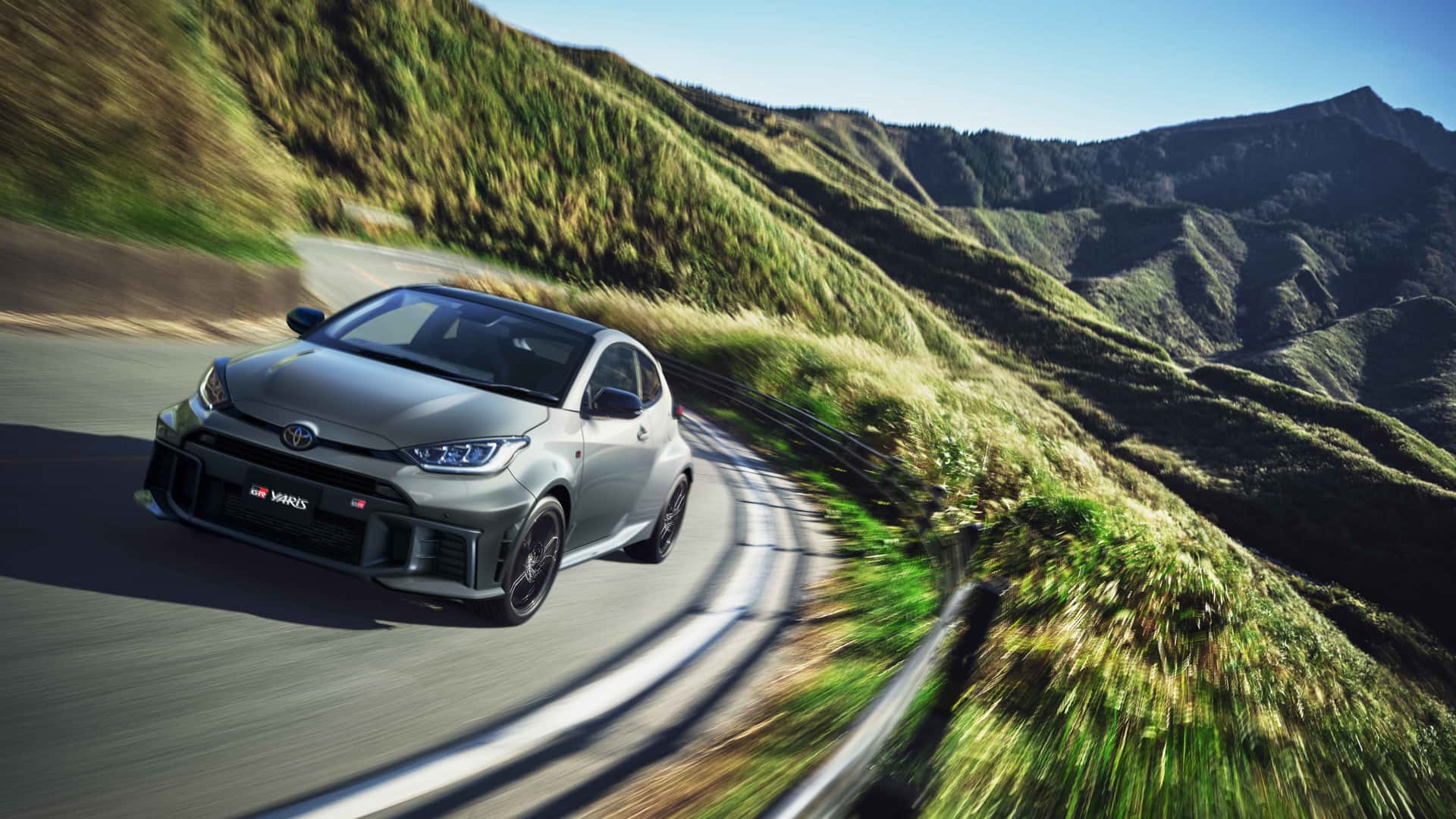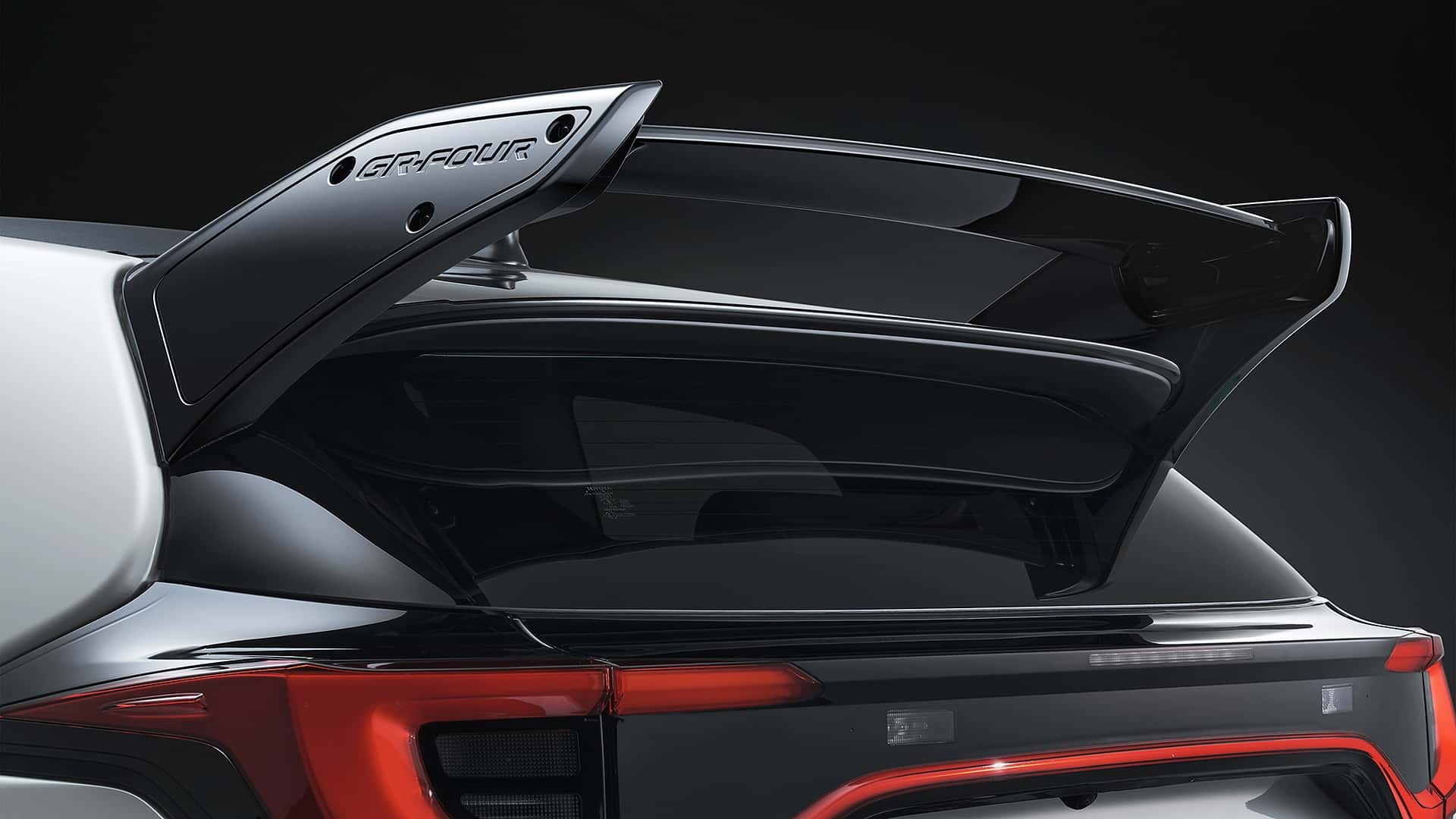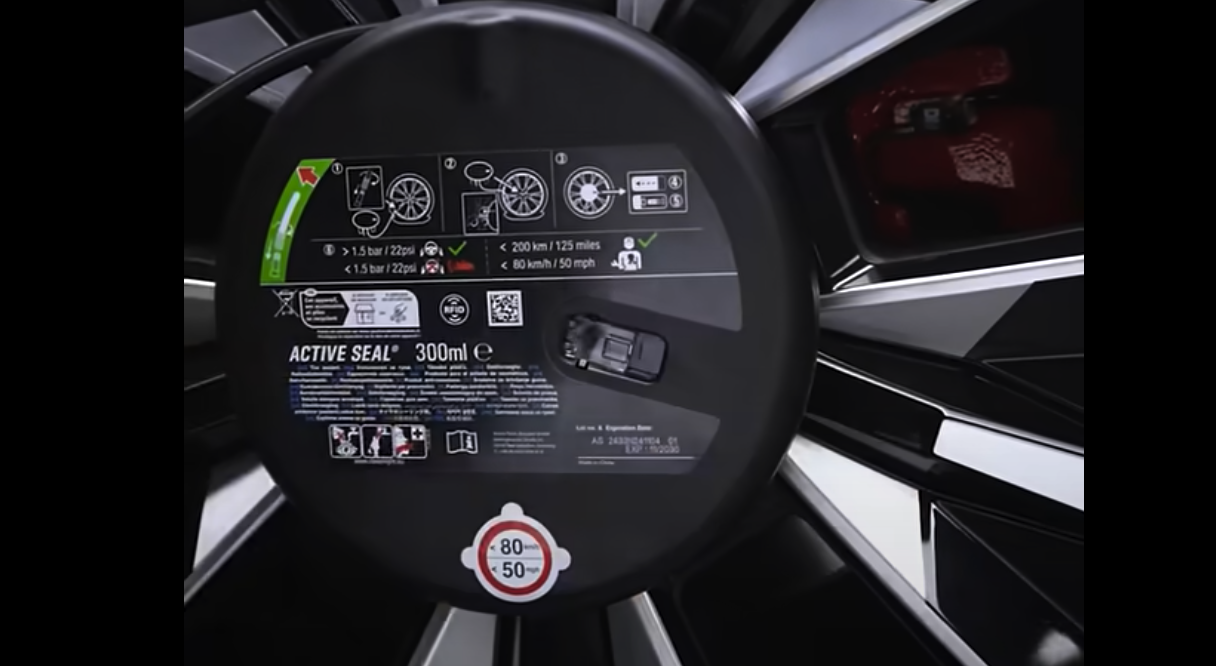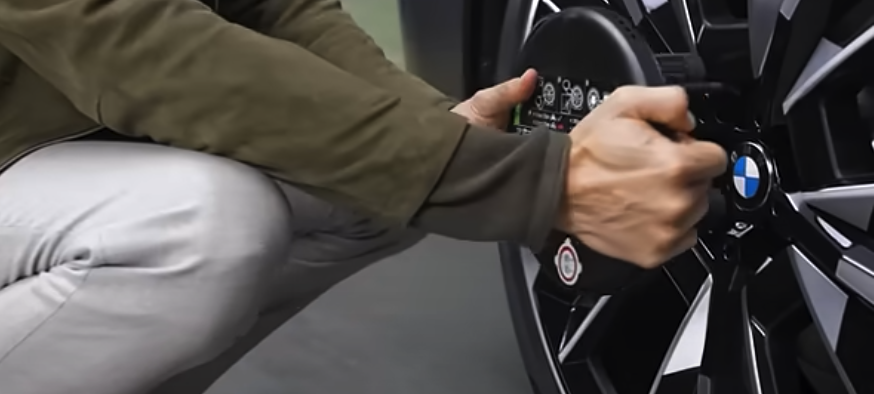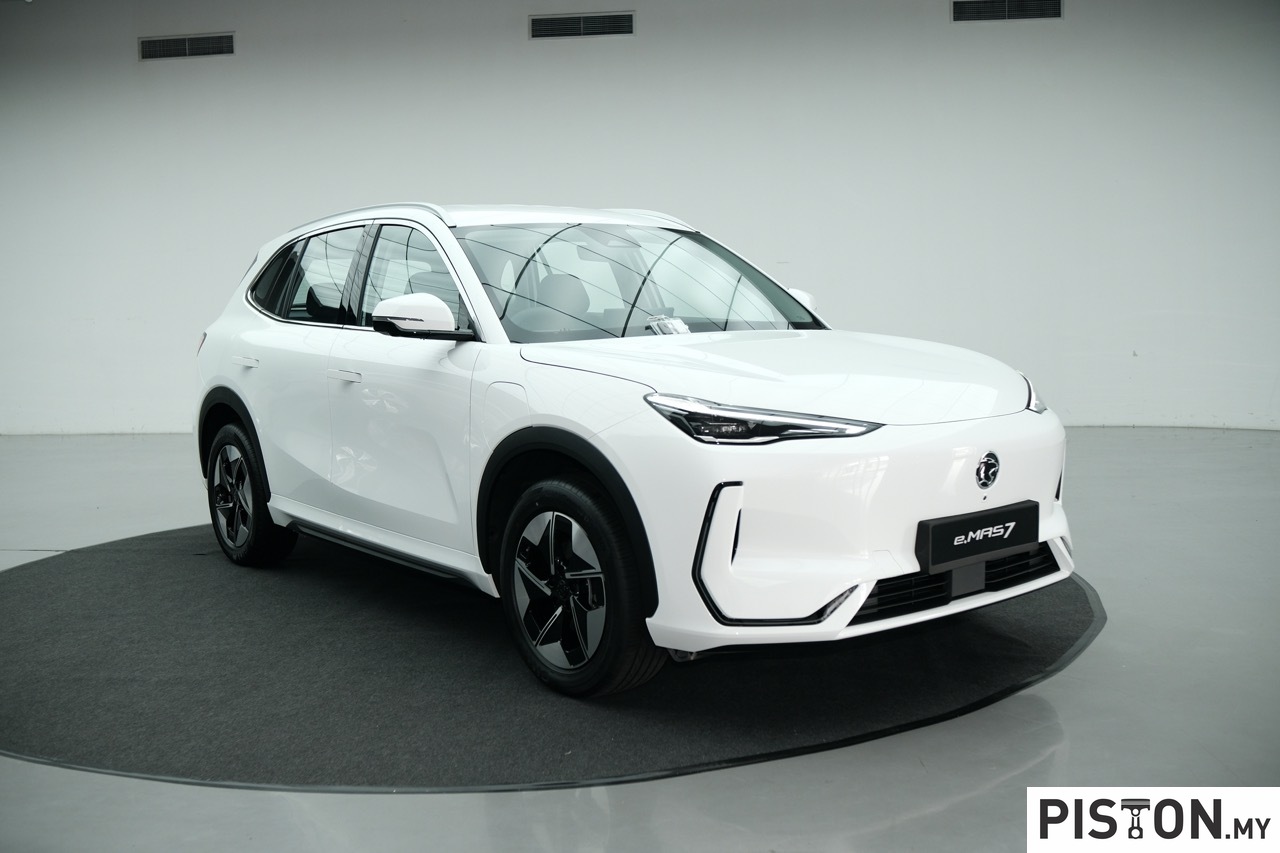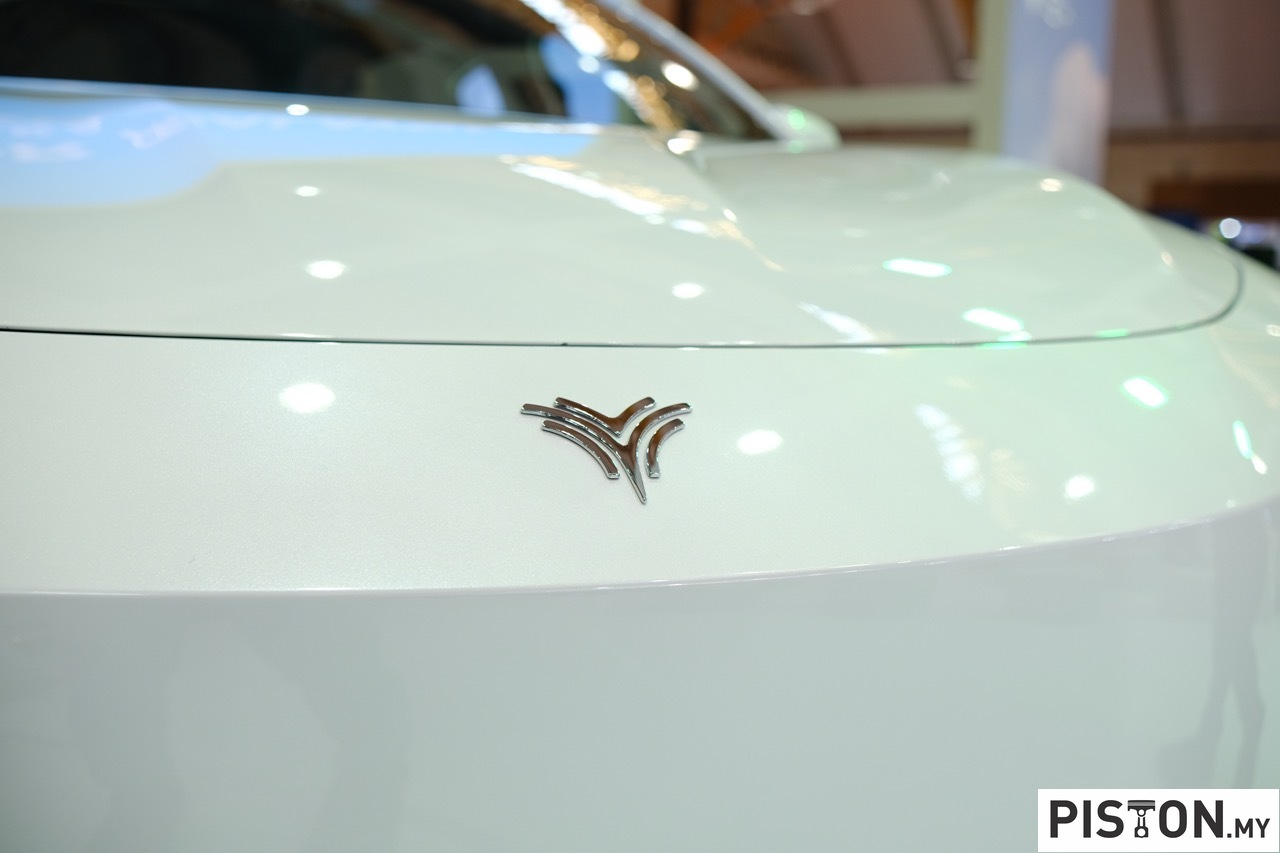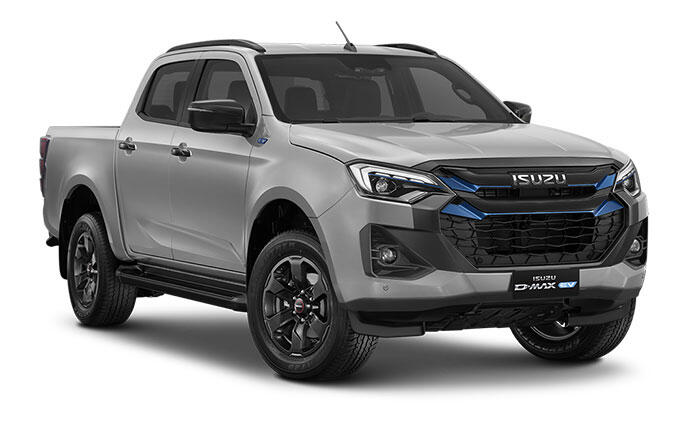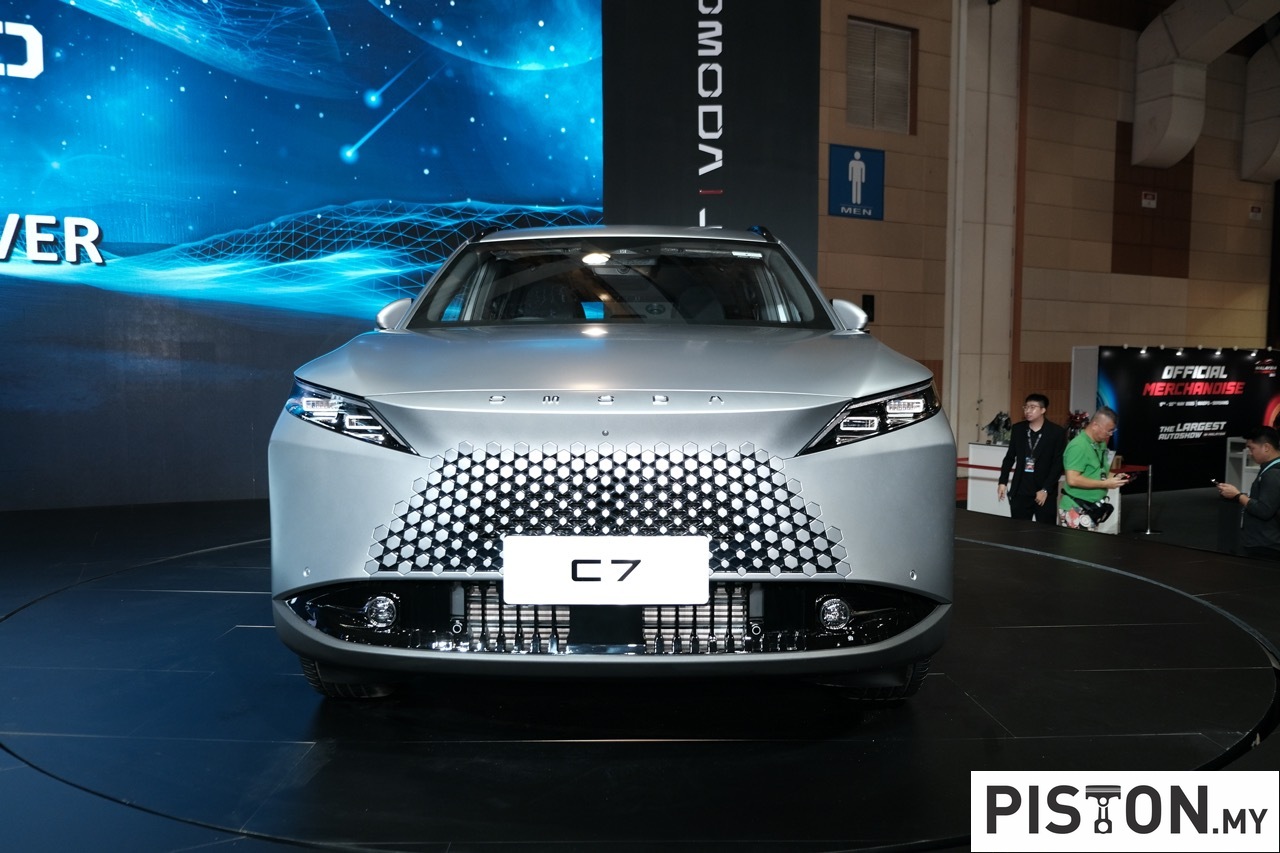GAC Honda has officially introduced the P7 in China, an all-electric SUV that represents the brand’s first venture under the newly developed “Architecture W”, a platform purpose-built for battery electric vehicles. With prices ranging from 199,900 to 249,900 yuan (around RM131,000 to RM164,000), the P7 arrives in three distinct variants, each aimed at redefining Honda’s presence in the EV segment.
The P7 makes a bold visual statement with its futuristic design language inspired by mechanical aesthetics. Its broad, low-slung profile is crafted for aerodynamic efficiency, enhanced by a seamless body construction that reduces drag. At the front, a closed-off grille is complemented by a full-width LED light bar, while the lower section features a blacked-out multi-slat bumper that adds visual depth and aggression to the SUV’s appearance. Notably, the P7 is also the first model to carry Honda’s latest brand emblem, signifying a new design direction for the marque.
Dimensionally, the P7 positions itself as a spacious option in its class. It stretches 4,750 mm in length, 1,930 mm in width, and stands at 1,625 mm tall, supported by an extended wheelbase of 2,930 mm. For comparison, this places it larger than the sixth-generation Honda CR-V currently sold in Malaysia, particularly in terms of wheelbase and overall width, which contributes to a notably high space utilisation rate of 85.8%.






